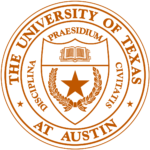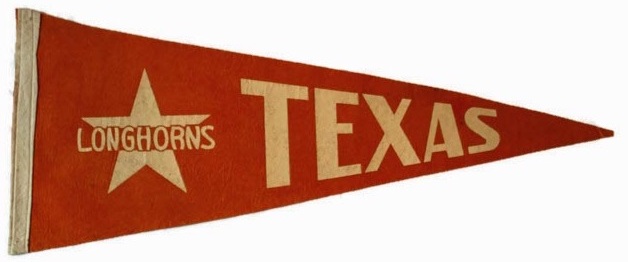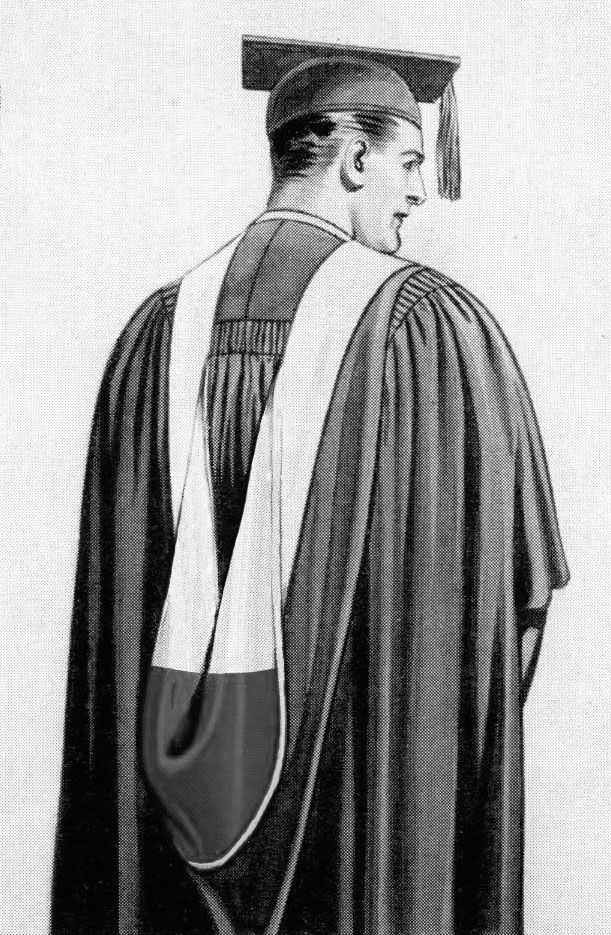University of Texas system
Each institution in the system uses different athletic colors but the same academic hood lining pattern from the original University of Texas:
University of Texas at Austin
Texas
1883






Citations in the World Almanac (listed by cover date; color information is from the previous year): white/old gold (1895-1897), white/orange (1900), orange/white (1902), white/gold (1904-1908), orange/white (1909-1912), white/gold (1913), orange/white (1914-1935)
The University of Texas was a client of academic costume manufacturer Cotrell & Leonard in 1902, according to Concerning Caps, Gowns and Hoods: Bulletin 17 (1902). As Cotrell & Leonard was also the depository of the Intercollegiate Bureau of Academic Costume (IBAC), the IBAC had no doubt assigned a hood lining pattern to Texas by 1902 at the latest. But no description of the university’s hood was given in that catalogue.
The first definitive and complete Intercollegiate Bureau description of Texas’s hood lining was in a 1918 IBAC list where it was stated to be white above orange, divided per chevron. This description went unchanged until a 1969 IBAC list, which cited the university’s hood as orange with a white chevron. This was apparently an error, as a 1972 IBAC list reverted to the original “white over orange” description from the early 1900s.
Here Texas’s hood design has been slightly modified to more closely resemble the school seal, which is white above orange, divided per bar. The official colors selected by the university in 1900 and used in the original IBAC hood assignment have been retained, but one should note that the University of Texas currently uses “burnt orange” and white.
The University of Texas did not have official college colors during the first decade of its existence, which led students to adopt a wide variety of unofficial colors to show their school spirit. Orange and white ribbons were worn by Texas fans at an 1885 baseball game, and gold and white were used for the uniforms of the 1893 football team. In the early 1890s, the University of Texas was also cited as having three school colors of white, heliotrope (a pinkish-purple color), and old gold in The World Almanac, or as a two color combination of white and old gold. Students in the University of Texas Athletic Association purchased orange and white uniforms for the 1895 football team, but because white was easily soiled, the 1897 team wore uniforms of orange and maroon. So, during this period the Athletic Association described the the university’s colors as either gold and white, orange and white, or gold and maroon. Additionally, the University of Texas medical school in Galveston used royal blue as its (single) color.
By the late 1890s, the University of Texas Board of Regents had had enough of this chromatic confusion, so in 1900 they asked the faculty, students, and alumni to choose a set of official colors for the university. A poll was taken, and a majority voted for orange and white. Happy to have the subject nailed down, the Board made these the official colors of the University of Texas.
Unfortunately, the orange dye in Texas’s athletic uniforms would usually fade to yellow by the end of the season, which led to jokes by sports rivals that the Texas athletes were “yellow” cowards, so in 1928 the head football coach ordered uniforms in a darker shade of “burnt orange”. During the 1930s, the team began to use bright orange again because the burnt orange dye was too expensive to purchase during the Depression. Burnt orange returned in the 1960s, and today the colors of the University of Texas are officially burnt orange and white.
For more information on this subject, see page 131 in the September/October 2002 edition of The Alcade, the University of Texas alumni magazine.
